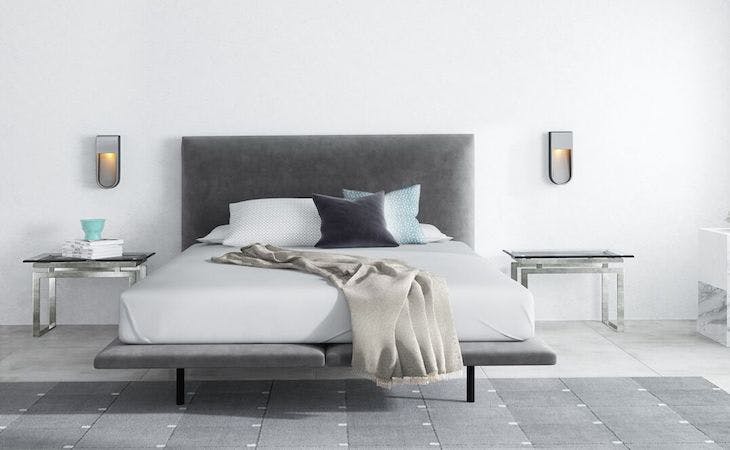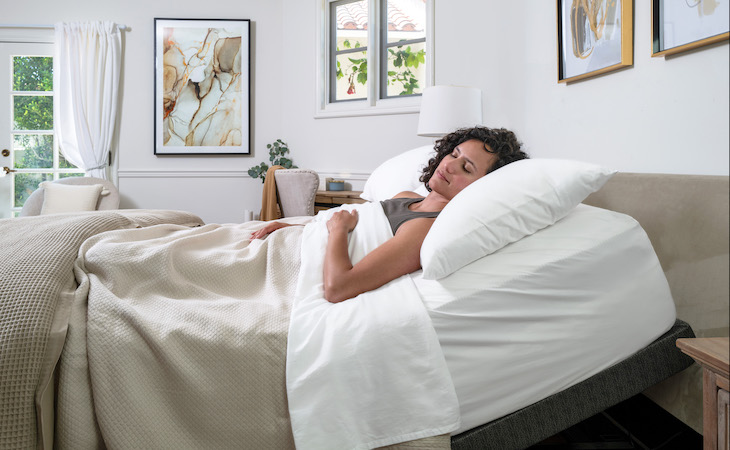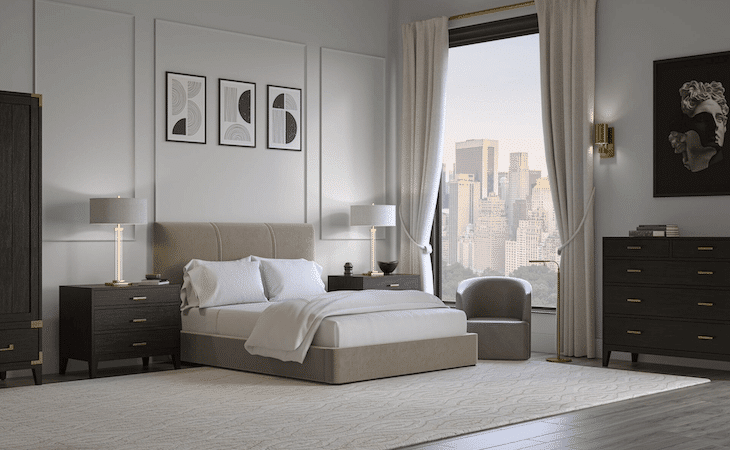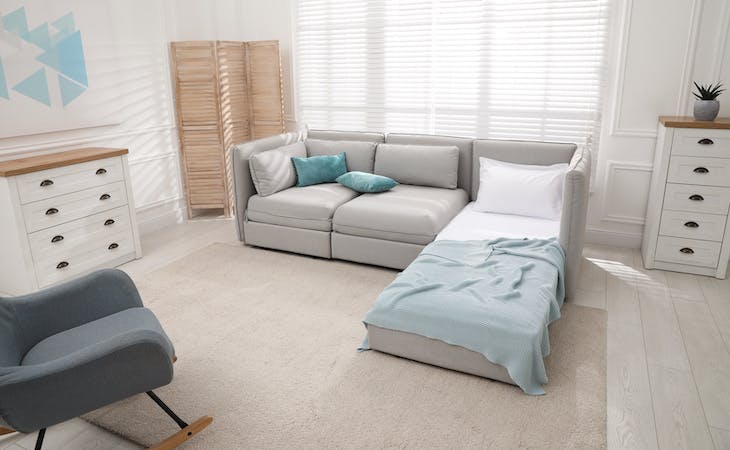If you’ve been looking to give a contemporary look to your bedroom, you might have encountered the term “floating bed.” A floating bed is a bed that’s been designed to look as if it’s floating in the air—and besides the modern look, it offers a few other advantages.
But as with everything else, there are a few important things to consider before deciding whether a floating bed is right for you and your situation. Here’s everything you need to know about floating beds.
What is a floating bed?
A floating bed is a type of platform bed frame that’s been designed to look as if it’s floating in the air. This look is achieved thanks to the positioning of the bed’s legs that are placed closer to the center of the frame. In some cases, a floating bed may be attached to the wall.
Floating beds are typically wooden and tend to be lower than an average bed. Like platform beds, floating beds don’t require a box spring. There’s a huge variety of floating beds on the market today to suit any style and budget.
Pros of a floating bed
Floating beds have quite a few benefits. These include:
- They have an eye-catching look and come in various styles, allowing you to personalize your sleeping space.
- Since floating beds have slats like platform beds, you don’t need to buy a box spring to go with them—saving you money and bulk.
- Their design makes it easier to clean underneath the bed than with other bed frames because the legs don’t get in the way. This is particularly important for people with dust mite allergies as with floating beds it’s easier to keep your sleeping space dust-free.
- The space underneath the bed can be used for storage, which might be hugely helpful for people living in small spaces.
- They can come in a variety of styles and colors and often include additional styling options. Some floating bed frames come with below-bed platform lights or other features like a headboard, overhead lights, or side tables, all of which can add to the modern look of your bedroom.
Cons of a floating bed
Despite all the advantages, floating beds also have a few drawbacks you should be aware of. These include:
- The low-profile design of the bed may make it difficult for some people to get in and out of bed. They may not be suitable for older adults or those with specific mobility conditions.
- Moving a floating bed can be a hassle, especially if you have a wall-mounted version.
- The quality of the bed frame affects its durability. The cheaper versions will last only a few years. The more durable ones are a lot more expensive.
- Some floating bed frames come with weight restrictions which makes them unsuitable for larger-bodied people or if you have kids prone to jumping on the bed.
- It might take you some time to get comfortable with the design of the bed. Initially, the anxiety of sleeping on a bed with no visible support might result in a disturbed sleep cycle.
How to style a floating bed
Floating beds fit well with a modern, minimalist style and look good in both small and large bedrooms. You can attach it to the wall if your floating bed can be wall-mounted or keep it in the center of the room with a bedside table on either side.
If your floating bed doesn’t come with bedside tables, get ones that are the same height as the bed—or get floating bedside tables that can be mounted to the wall to complement your wall-mounted floating bed.
If your bed doesn’t come with a headboard, add a console or a shelf behind it for storage and to double as a headboard.
FAQs
Are floating beds good?
Floating beds can be a fantastic option if you crave that modern minimalist look and don’t have any mobility issues. In addition to elevating the look of your bedroom, they can be a game-changer for people with allergies and those looking for additional storage space.
How are floating beds supported?
Some floating beds are wall-mounted and held up with a single support leg. Others are supported by a single smaller box platform underneath that is placed so as not to be visible from the outside. Floating beds can also use lucite (clear acrylic) legs that are located further from the corners and closer to the center.
Are floating beds sturdy?
High-quality floating beds are quite sturdy even though you can’t see their legs. Although some come with weight restrictions, an average queen-size floating bed can usually hold at least 500 pounds. Some high-quality floating beds can hold more.
How much does a floating bed cost?
Prices for floating beds range from a few hundred to a few thousand dollars. A good floating bed can cost anywhere between $200 and $1,000, and the price will depend on the materials used, design, size, and accessories. Luxury floating beds can cost upwards of $3,000 or $4,000.
Get high-quality floating beds and mattresses at Saatva
Is a floating bed right for you? When deciding whether to get one or not, consider your mobility issues, design preferences, and other factors such as how much storage you need.
A floating bed could make an excellent addition to your bedroom, particularly if it has a modern design aesthetic.
Check out Saatva’s wide range of stylish bed frames. Our
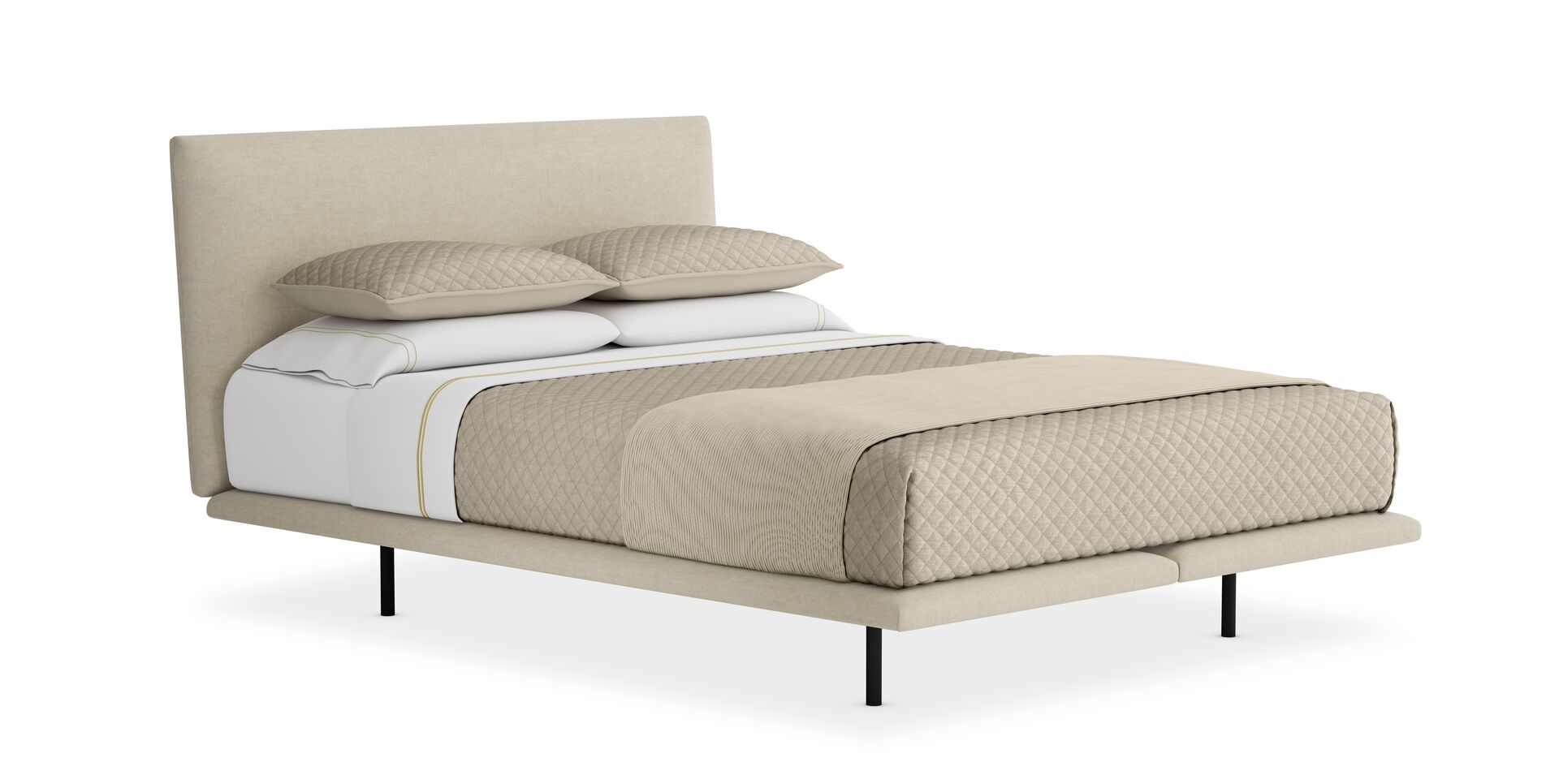
A low-profile solid platform bed frame with modern elegance
has an elegant, modern design. Its recessed legs make the bed appear as if it’s floating off the ground.
Saatva also offers a variety of mattresses well-suited for floating beds or any other bed frame you prefer. Our mattresses are comfortable, durable, and handcrafted.
Take our mattress quiz to determine which mattress is best for your sleeping habits.

